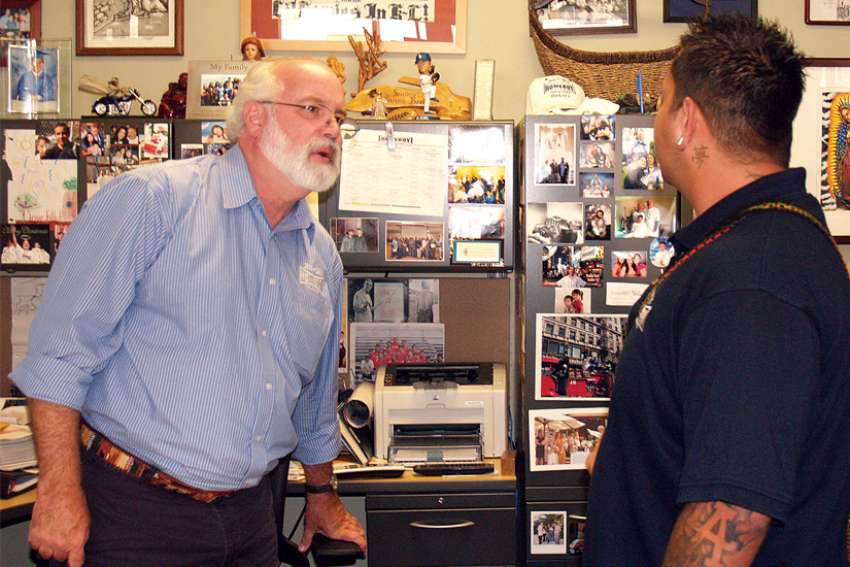Anyone who knows people on the margins of society quickly realizes there are many reasons they have ended up where they are, and in a disproportionate number of cases it is associated with childhood trauma. The innocence of youth is often stolen through exploitation or simply through being victims of neglect in environments of anger and hostility in which verbal and psychological blows fall upon the weakest.
These psychological wounds inflicted on childhood limit their ability to make wise decisions throughout life, which often results in addiction, violence and social maladjustment.
Fr. Greg Boyle, who works with street gangs in Los Angeles, describes what he calls a “lethal absence of hope” that is found on the street and that drives many into the clutches of gangs and the cold embrace of drugs. The holy innocents on the street need hope, a hope that they matter to someone, even a deacon out walking the streets.
As I look forward to a new year, The Church on the Street will continue to reach out to these victims, but recently I have been wondering what else can be done to counteract this “lethal absence of hope.”
A few years ago, I came across a remarkable TED talk called “Let’s Treat Violence Like a Contagious Disease.” The speaker, Dr. Gary Slutkin, made the observation that the greatest predictor of violence in a neighbourhood is a previous act of violence and this resembles a contagious disease that is passed on through contact. In the Middle Ages epidemics were blamed on “bad people” and disease was seen as a punishment. The response to street violence, he said, was either to punish the “offender” or to fix everything: schools, family, homes.
Slutkin continued by saying that to reverse epidemics of disease, medical workers realized they had to do three things: isolate in order to interrupt the transmission at source, inoculate to prevent future spread and educate to provide group immunity by changing behaviour.
Applying this approach to violence, Slutkin has had remarkable success in lowering the incidences of violence in many cities around the world.
While this approach addresses the disease of violence, others such as Dr. Terrance Wade of Brock University are focusing on early intervention in order to support those at risk of catching the disease. Health care professionals have identified adverse childhood experiences (ACEs) that are traumatizing events occurring before the age of 18 and that predispose children to the diseases of violence, addiction and mental health problems.
With the support of the health care community, some of these problems can perhaps be offset. Clearly none of these traumatic events by themselves predetermine a violent outcome, since many children have gone through these and adjusted well to society, while others who have had a supportive upbringing have become trapped in lifestyles of violence and addiction. However, the accumulation of such events in the lives of holy innocents does increase the chance of unhealthy outcomes.
Over the years, in looking for solutions to youth violence and addiction, we have often “shuffled the deck chairs on the Titanic,” as the saying goes, expecting to avoid the impending iceberg. Yet despite these efforts the iceberg of the unholy trinity — homelessness, addiction and mental illness — still looms large and the holy innocents still endure the wrath of the world.
As the new year dawns, it is my hope that in the coming months The Church on the Street can somehow assist in galvanizing people of many faiths, and none, to unite in a concerted effort to promote and support innovative and hope-filled initiatives that protect the holy innocents.
These types of initiatives are labour-intensive and results are slow to perceive, and yet the Light of the World survived the killing of the Holy Innocents and grew up to call us all to announce this good news and to support all groups which are lighting a candle in the darkness of the night.
(Kinghorn is a deacon of the Archdiocese of Toronto: robert.kinghorn@ekinghorn.com)


